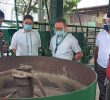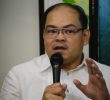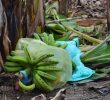By TYRONE A. VELEZ
Davao Today
DAVAO CITY, Philippines— Three days after Pres. Aquino’s State of the Nation Address which highlighted the positive economic accomplishments of his administration and which was roundly opposed by critics, local government agencies here took turns showing “inclusive growth” in the Davao region.
At the annual regional economic performance report presented by the National Economic and Development Authority (NEDA), National Statistics Coordination Bureau (NSCB) and Department of Labor and Employment (DOLE), the government cited Davao’s “strong” 7.4% growth last year.
Among SONA’s critics was Davao-born Gabriela Women Partylist Representative Luzvimida Ilagan who earlier said that the number of poor Filipinos skyrocketed in 2012 amid the so-called economic growth.
NCSB 11 Officer-In-Charge Rosendo Aya-ay said the Davao Region’s economy grew from 3.7 percent in 2011 due to strong performance in real estate, services and manufacturing last year.
NEDA 11 Regional Director Maria Lourdes Lim said that “Davao leads in the development of real estate and business services, as it strengthens its position as the financial and services hub of Southern Philippines.”
Lim said the growth of services is attributed to the expansions in BPO and banking, and the establishment of big shopping malls such as SM and Abreeza Ayala Mall. Lim also credited government’s boost in public sector spending such as the Conditional Cash Transfer (CCT) for the poor.
The services sector contributed 128 billion pesos to the regional economy, accounting for more than half of the region’s output.
The industry sector posted a much faster growth from 0.7% in 2011 to a high of 8.9% in 2012. The growth is attributed to the rise in manufacturing of food and beverage, government spending in infrastructure, and the construction of malls, high-end residences, social housing, hotels and condominiums.
Lim said they see this growth as inclusive since Davaoeños were absorbed to jobs created from the rise of services sector. Unemployment rate has reduced to 5% in the first quarter of 2012, which is lower than the national rate of 7% according to DOLE 11 Regional Director Atty. Joffrey Suyao.
Lim claimed Davao as one of seven regions with favorable numbers in poverty reduction in the first half of 2012 with a poverty rate of 28.6%.
NCSB’s Aya-ay said the figure was slightly higher than the 2009 figure of 27.3 but ‘statistically insignificant.”
NCSB Secretary General Jose Ramon Albert explained that while CCT is given to the poor, things don’t transform overnight. He said that if the region sustains its growth, poverty will be reduced.
“If this growth is sustained, such as in manufacturing, this will become the source of employment to absorb low-income earners and out of school youths.”
NEDA said the region is right on track for its growth. Lim said the region’s challenge is to address the “slight setback” in agriculture brought by Typhoon Pablo that left agri-business plantations devastated in Compostela Valley and Davao Oriental.
Another challenge is to provide stable power supply in Mindanao which needs additional power generating capacity of 1,050 megawatts. NEDA said the region has invested in energy with the P 1.3 billion and Aboitiz-Hedcor hydro-power plant in Davao del Sur and the 1.1 billion coal-fired power plant in Davao.
But workers and urban poor were not satisfied with these figures. Dodong Basilio of Kilusang Mayo Uno said the number of unemployed in Davao region has risen to 300,073 and companies are hiring on contractual basis.
Rep. Ilagan refuted claims that the CCT program has alleviated the country’s poverty. She cited NCSB reports that nation’s poverty incidence is at 27.9% in 2012 or around 26.8 million poor Filipinos living at a low poverty threshold of P52 per day.
Corazon Espinoza of the urban poor group Samakana said what the poor need are social services and more jobs.(Tyrone A. Velez /davaotoday.com)
davao city, davao del norte, davao oriental, davao region, DOLE, neda, NSCB, philippine economy, pnoy sona 2013, poverty rate, pow, SONA 2013









